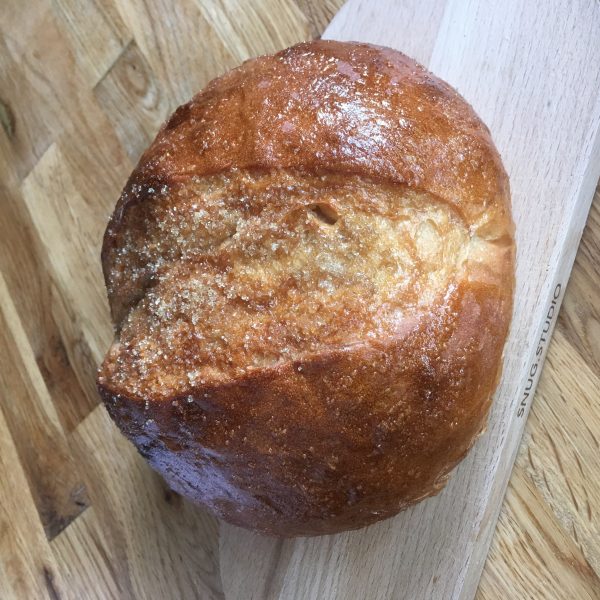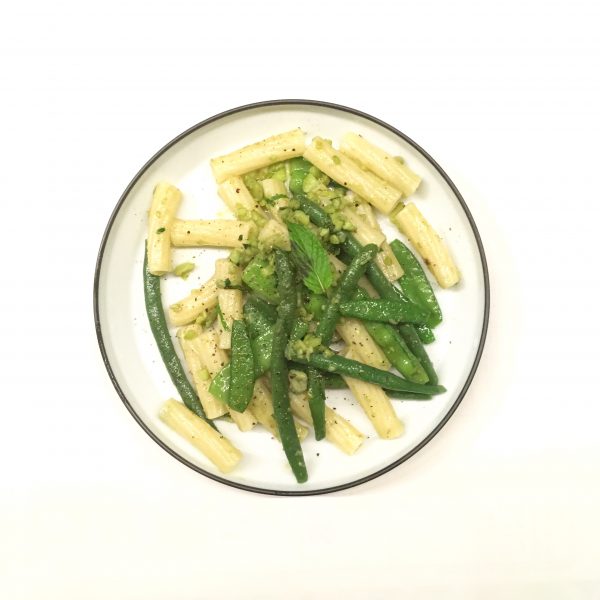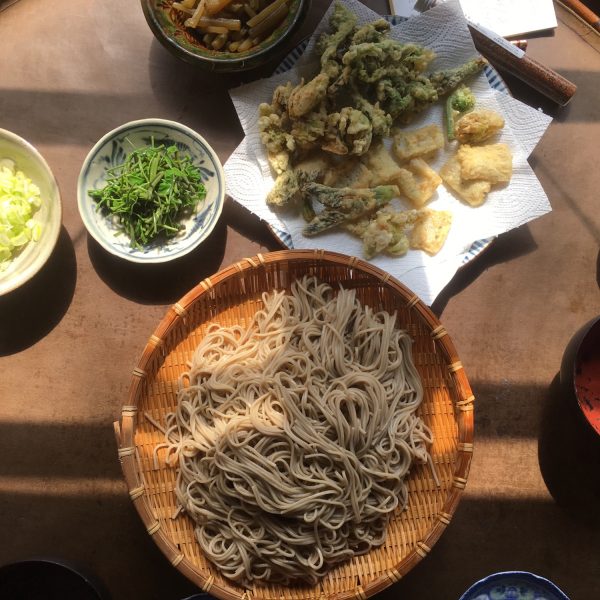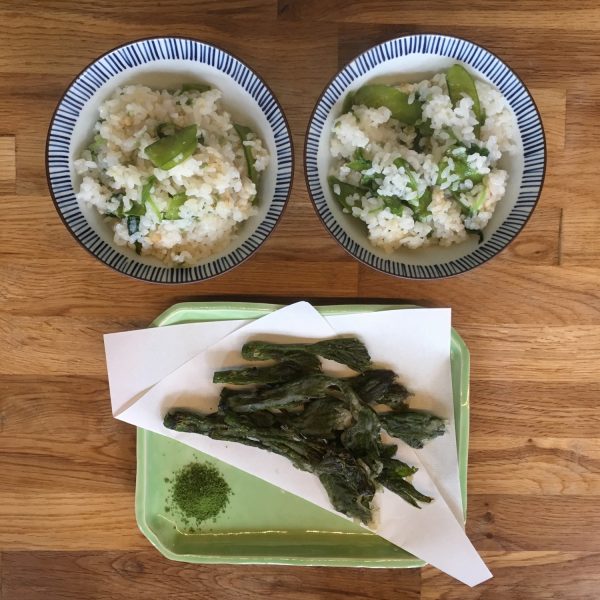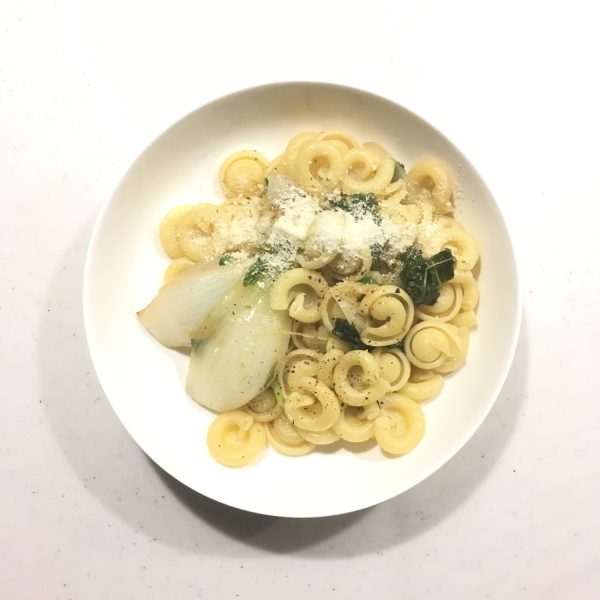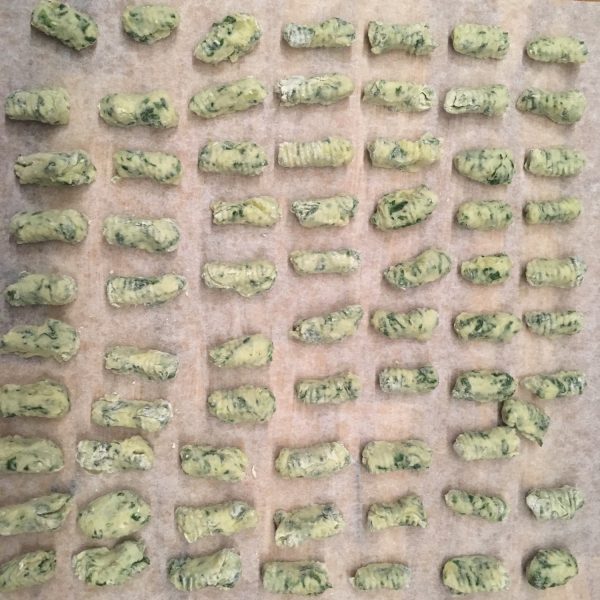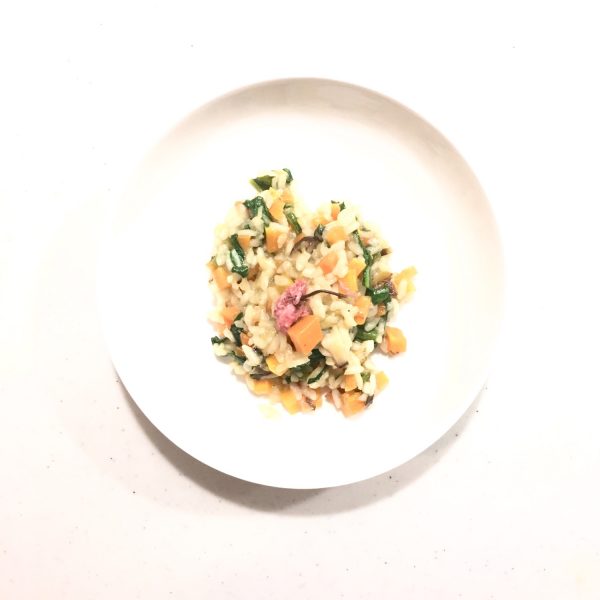Yes! You read well… I told you I was back to back to baking… When I was a first year PhD student the first international conference I attended and presented at was a huge conference held in Barcelona. At that time A. had plenty of holidays and surely plenty of time to take them, so we were always traveling together. We spent one week in Barcelona and a couple of days in Sitges. And one culinary thing that stayed for ever in our mind was the dinner, or more the dessert, we had on lovely terrace nearby the museum of contemporary art. The museum was still fairly young and the surroundings all in development. Using the base of the traditional pan con tomate it was a pan con chocolate. You can imagine with bread and chocolate in the same dish we would go for it, and this has surpassed our expectations by its simplicity and its tastiness. It was simply the same as pan con tomate replacing literally the tomatoes by dark chocolate: a toasted slice of bread with melting dark chocolate topped with fragrant olive oil and salt sprinkled. Back home I remember cooking some once in a while and always enjoying it. So this time while I was making the dough for my rosemary focaccia, I decided to keep a bit of the dough to test a chocolate focaccia. And like I though it would be, it was delicious. I’m sure you’ll see some more soon, in particular the picture doesn’t give a fair idea of how delicious it was!!
Sugar bread
When I was a child we use to spend part of August in my parents country house on the Causse Mejean, France. It was a long drive to go there, we would often stop have breakfast or lunch on the way, have a swim in Gard, and then start the winding road that goes up and down and up and down and finally up. This road is the Corniche des Cevennes and is definitely a beautiful one I would recommend to everyone who likes driving. Once up in our house, the nearest shop is a mere 30min drive. By then their would be food trucks coming with bread, meat and some groceries. I remember the fouace that we would buy and then have for breakfast. It was a heavy kind of brioche but nit buttery, with a sticky crust. After I was 10, this bread wasn’t sell anymore, so it’s been some time I haven’t had any. You can then imagine my surprise the first time I cooked sugar bread from Kayser bread book. It was exactly that. I made sugar bread a few times, and each time it took me back there. So now I want to share this recipe with you. If you think about it, it a classic bread recipe in which you add a bit of sugar, and finish with a syrup to have the sticky soft crust.
Sugar bread (500g bread)
– 250g of white flour
– 160g of tepid water
– 5g of yeast
-5g of salt
– 40g of brown sugar
– 3tbs of sugar and a bit of water for the syrup
Mix all the ingredients together except those for the syrup. Knead until soft. Prove for 2h. Shape as you like. I made a ball but I could also have made a braid. Leave to rest for 1h. Then bake at 200deg for 30min.
Make the syrup by mixing the sugar and water in a bowl. Apply the syrup everywhere and let cool down before eating.
Enjoy your week!!
Spring greens
My kitchen garden seems to be doing ok! Every week I harvest something, and recently it’s been focused on snap peas and herbs. Two plants of peas actually have been producing a handful of snap peas every week, which is just the perfect amount for us so far, as I used them mixed with other vegetables. The mint and coriander are doing good and I’ve harvesting quite some too for daily use, same with some kind of salads my neighbor gave me (we exchange crops). I like the idea to just walk down in the garden and pick what is needed for preparing a meal. I’ve also checked that potatoes are coming, though I am worried the soil may be too rich… we’ll see… it’s not easy to be a beginner gardener and not to be able to check every day!!! I’ll learn from my mistakes and successes I guess and do better next year!
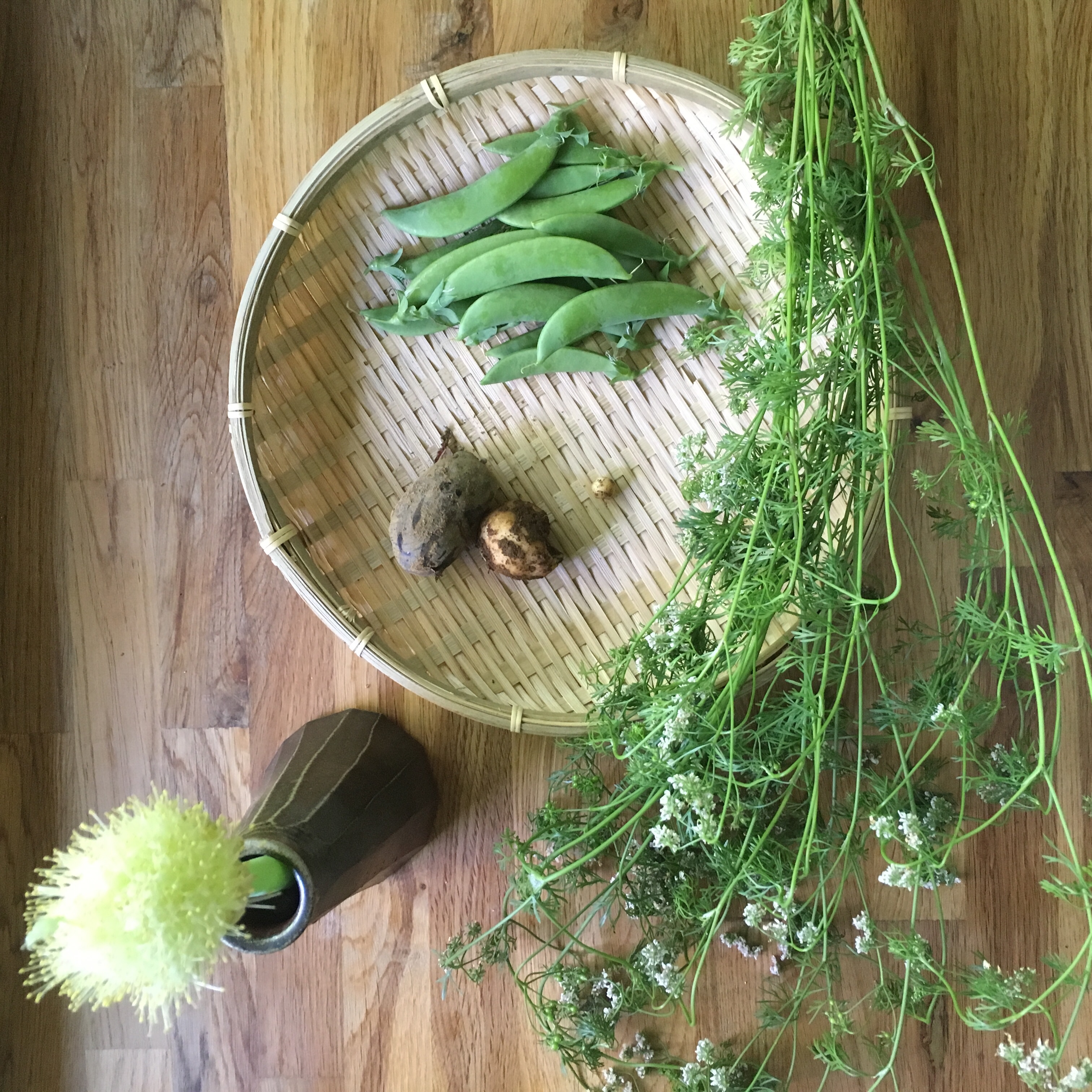
With all this greens, not only from my kitchen garden but also from the farmers market I was thinking of new recipes and inspired by Giula’s zucchini and saffron pasta recipe (that was super delicious) I prepared a fava beans and greens pasta sauce. The kind that is so delicious that you want more!!! Here’s my recipe.
Fava beans pasta (for two servings)
– 125g of dry penne or macaroni or some similar pasta
– a handful of fresh fave beans shelled
– a handful of fresh snap peas
– a handful of green beans
– a handful of shelled greens peas if you have some (I couldn’t wait and already had eaten up all mine!!)
– 5-10 leaves of fresh mint
– olive oil, salt and pepper
Boil the pasta. When al dente drain and keep.
In the meantime, blanche the fava beans and peel them. Blanche the green beans, the green beans and the snap peas. Puree the fava beans, add olive oil generously, salt and pepper. In a large pan at low heat, heat the fava beans purée and then add the pasta, and the other vegetables, stir well, add the mint washed and chopped. Serve and eat immediately!!
Have a great week!!
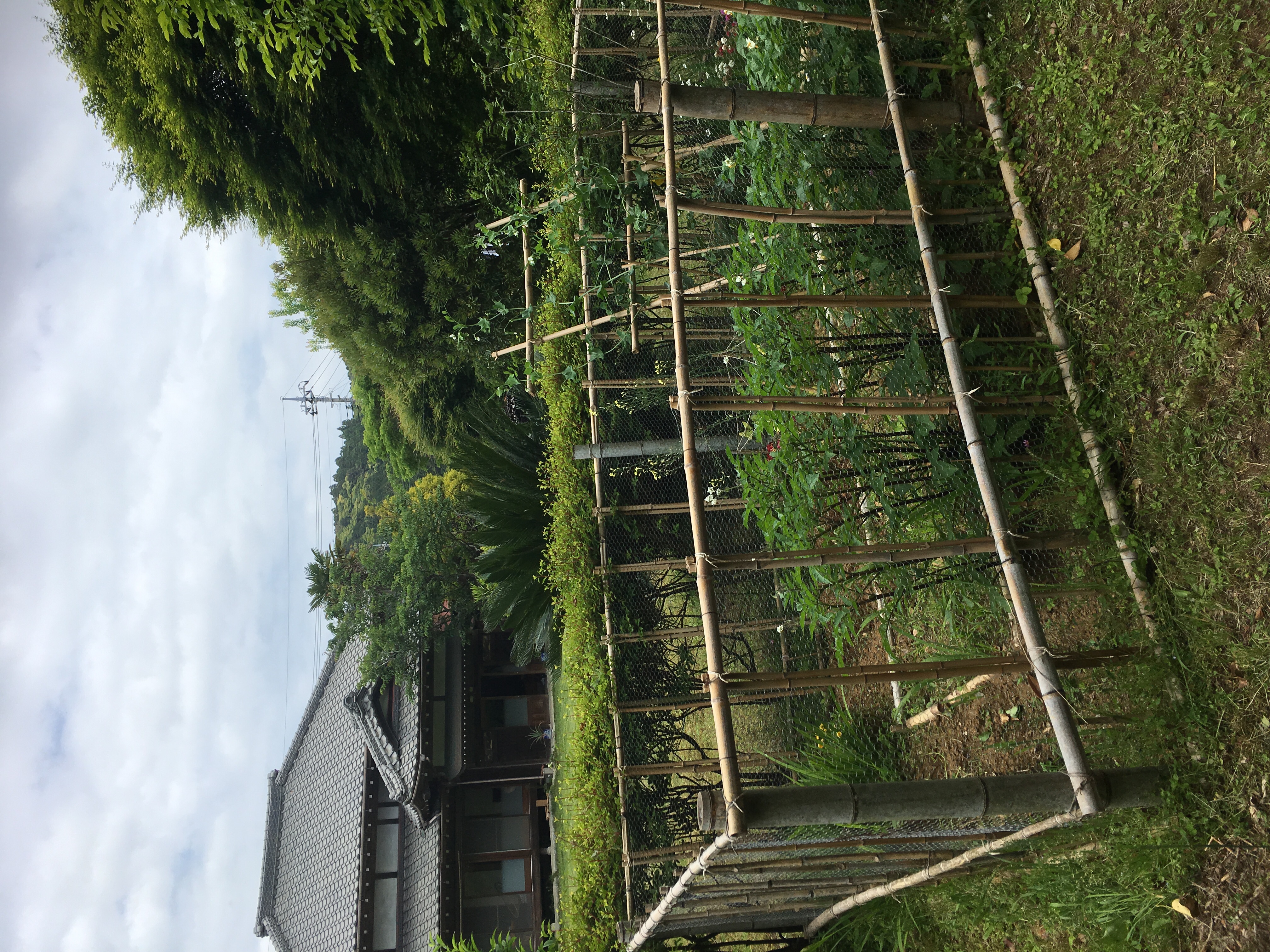
Urui
In the series of spring greens now is the time to talk about urui – うるい or hosta in English is not really a wild plant but rather something that grows freely in gardens. Their beautiful leaves and flowers are a nice ornament but what is most interesting is the leaves right after sprouting as they are edible and particularly delicious.
In Kanto area the season is much past for that and I don’t recall seeing any at the farmers market, and we don’t have any (yet) in our garden, however our friend K. in the Niigata mountains has plenty in her garden, so we left her with a huge bundle of freshly cut leaves.

After removing corollas and washing the leaves carefully they are ready to be prepared.
My favorite way of eating them to enjoy their fresh and crispy texture is to simply cut them in 4cm parts and cook them first in a little of olive oil while stirring, then add a bit of water and a few pink peppercorn and stop cooking when they are a vibrant green. Served as a side dish they are perfect.
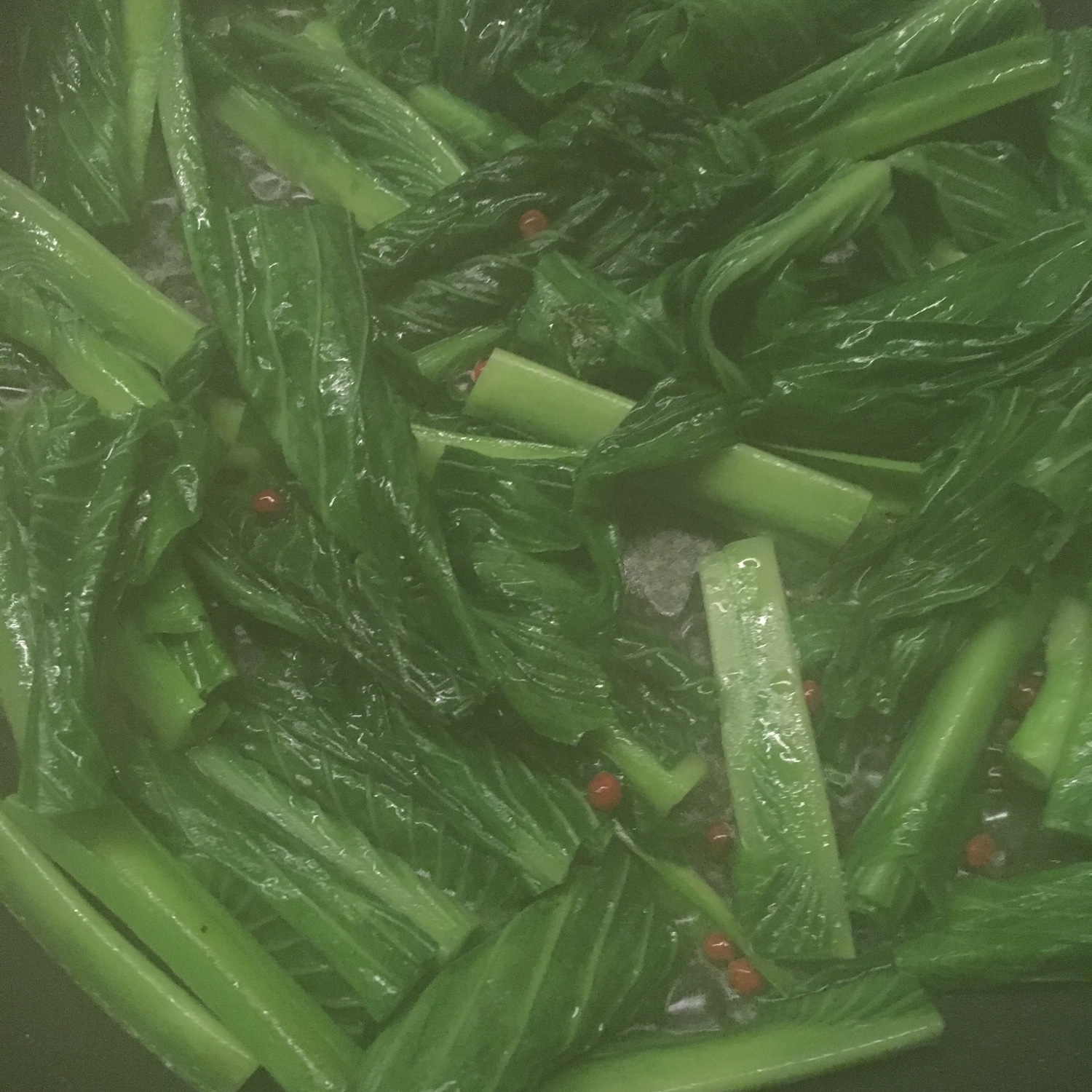
Wild mountain plants
More than 10 years ago our friends K. and S. invited us to their home in the Niigata mountains to go picking wild plants – 山菜 – sansai with them, and to cook and eat them together. Of course we couldn’t say no, and we had an amazing time with them walking deep in the forest, picking all the different kinds of wild plants, seeing wild animals and then learning how to prepare them…
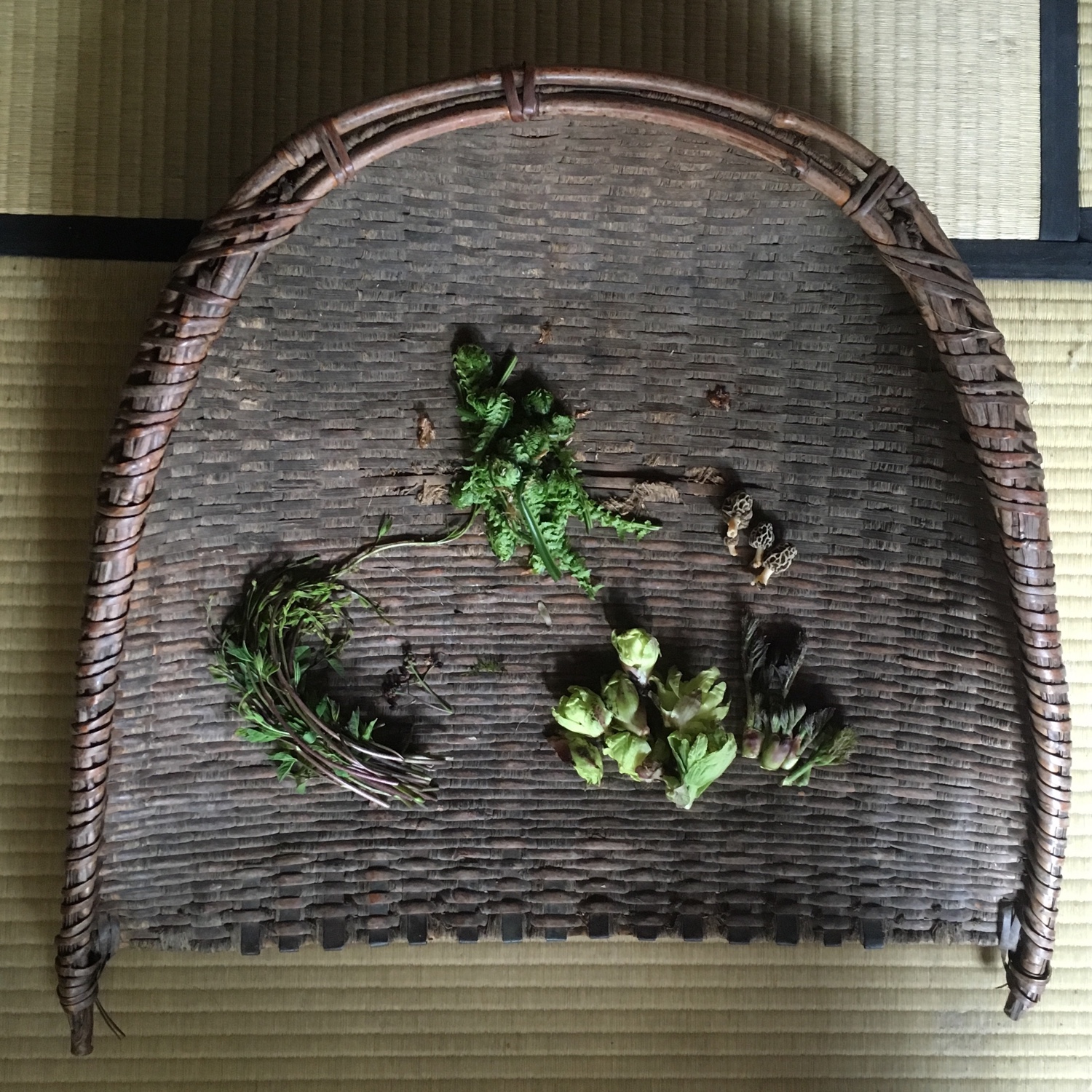
With the super long golden week, we decided to go and visit K. for a short trip to Tsunan and to go wild plants picking again. Since S. has past, we didn’t go as deep in the woods as we did before but we went for a long walk in the woods and picked enough wild plants for a nice lunch. The winter has stretched rather late in April with huge snowfalls and there was still quite a bit of snow, so we were a week or so too early. Here is an illustrated list of what we found though:
– つくし – tsukushi – horsetail
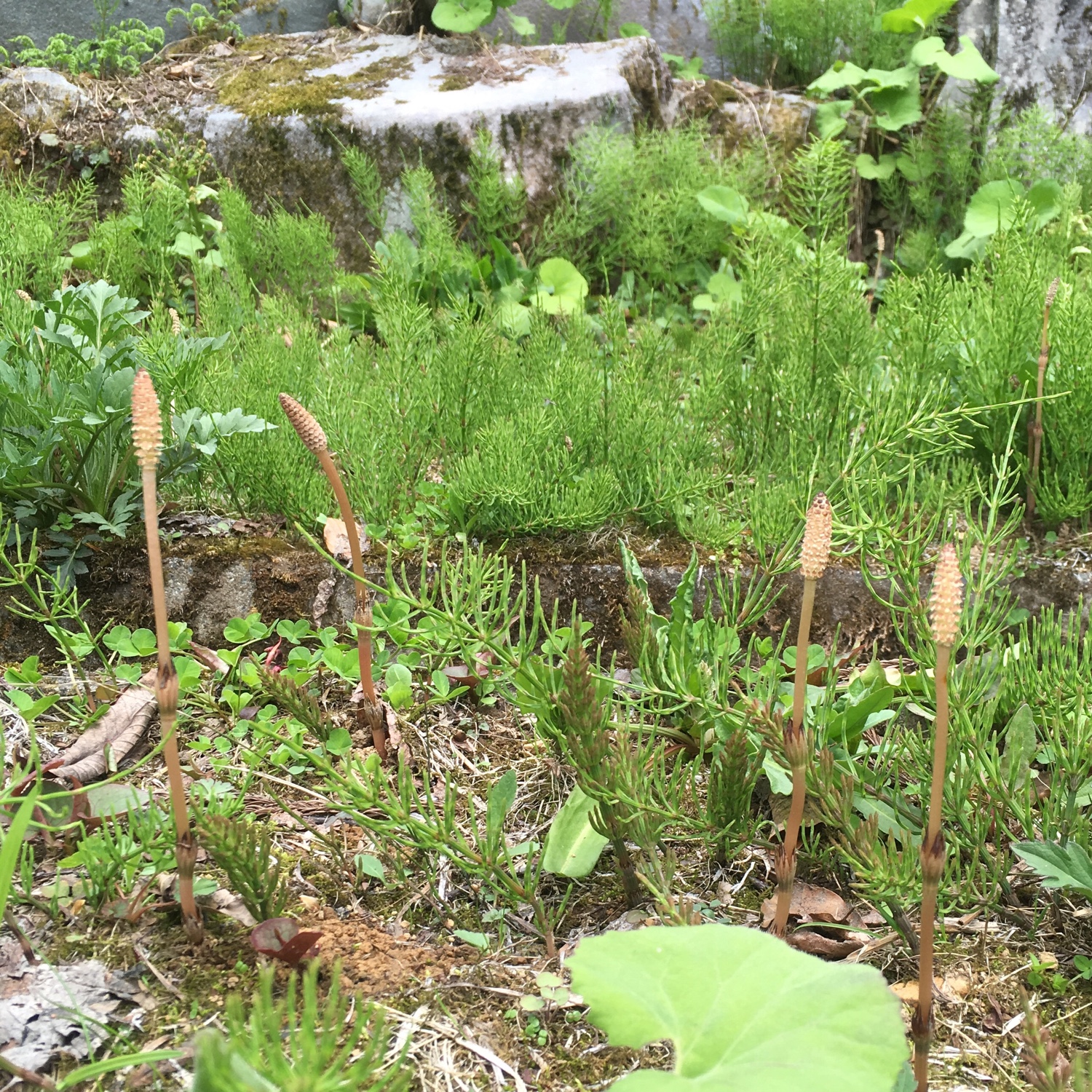 This little white flower can be easily found everywhere. Always take those that have no pollen. For preparation see my post here.
This little white flower can be easily found everywhere. Always take those that have no pollen. For preparation see my post here.
– こごみ – kogomi – fern sprouts
 They are easy to spot, easy to pick and super easy to cook. I find them as easy to prepare than wild asparagus: in omelets, with pasta… they are really the simplest of the sansai and the more accessible in terms of flavor and texture.
They are easy to spot, easy to pick and super easy to cook. I find them as easy to prepare than wild asparagus: in omelets, with pasta… they are really the simplest of the sansai and the more accessible in terms of flavor and texture.
– タラノメ – taranome – angelica buds
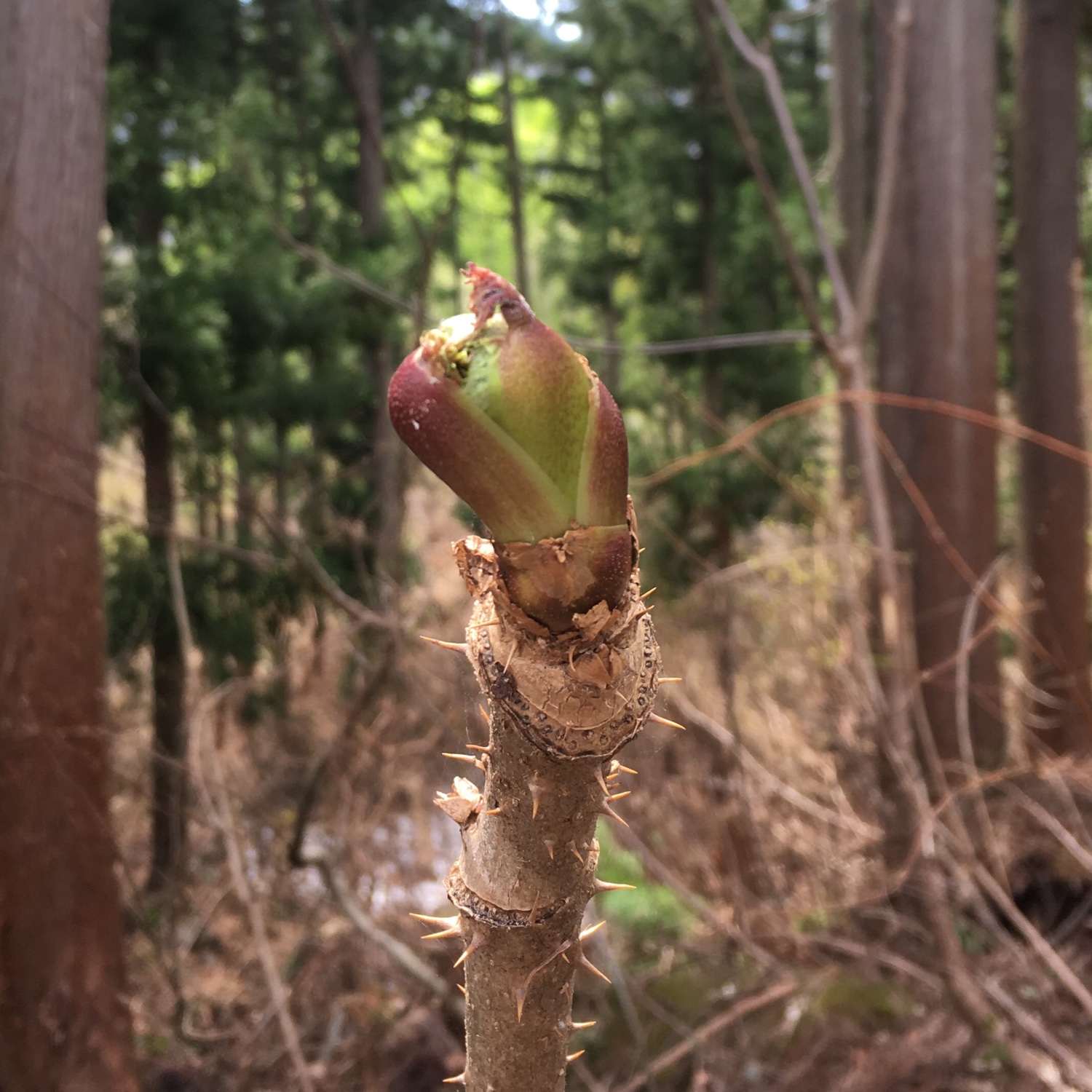 They grow at the head of wood sticks. The one in the picture is a little young and they need to have a few leaves out. These ones are really delicious in tempura and require little handling.
They grow at the head of wood sticks. The one in the picture is a little young and they need to have a few leaves out. These ones are really delicious in tempura and require little handling.
– 木の芽 – kinome – chocolate vine
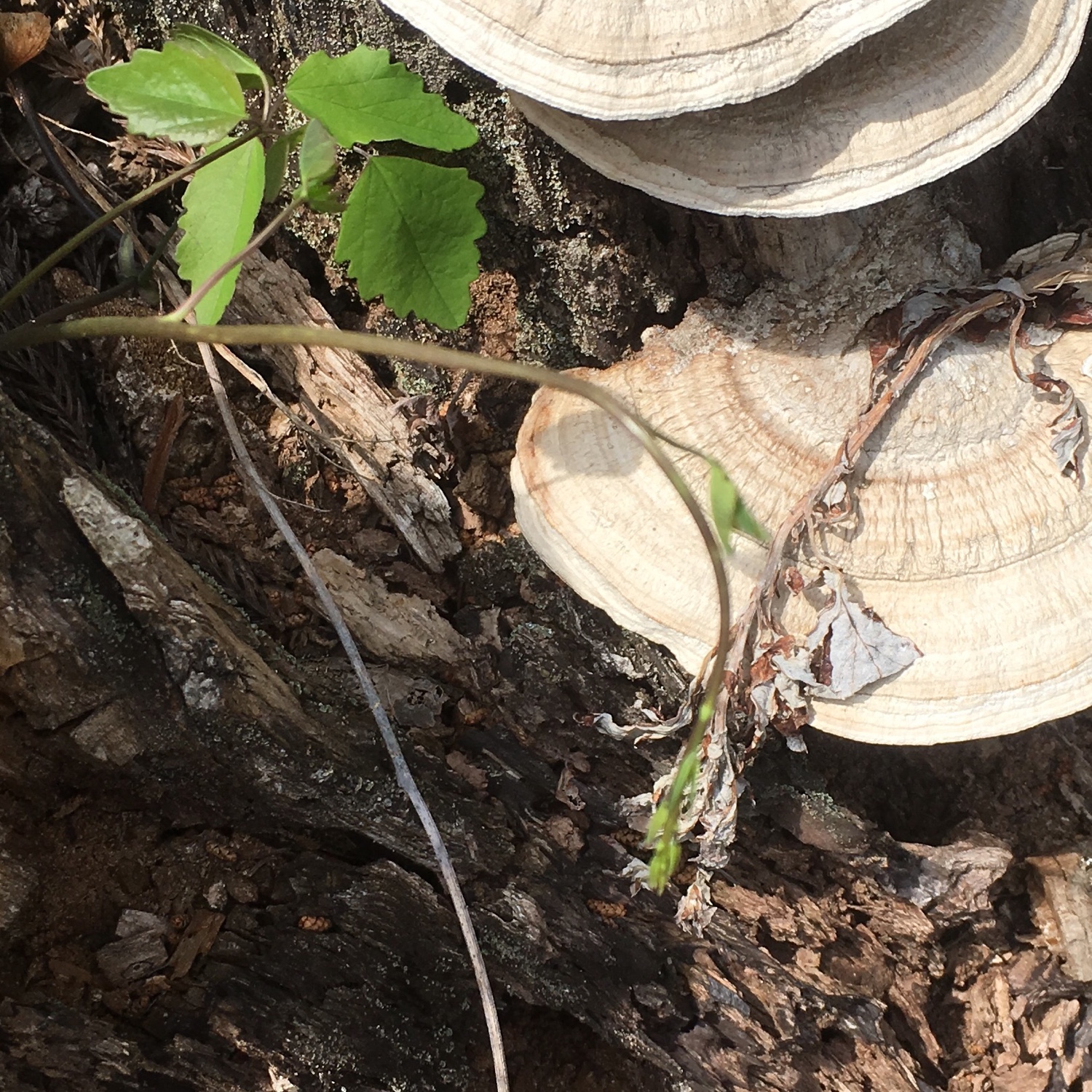 This little green sprout that grows in the midst of other trees sprouting is the hardest to find, but once you’ve spotted a tree, easily recognized by its leaves, it is easy to find the sprouts. Washed and eaten raw, or cook, it is fresh and crunchy.
This little green sprout that grows in the midst of other trees sprouting is the hardest to find, but once you’ve spotted a tree, easily recognized by its leaves, it is easy to find the sprouts. Washed and eaten raw, or cook, it is fresh and crunchy.
– 蕗の薹 – fukinoto
 In the mountain fukinoto grow right after a patch of snow has melted. So spot a patch of snow, and look at the edges. They are best when just sprouting. They can be as big as a ping pong ball. There taste is very strong and specific. Probably the most difficult to accommodate and cook of all. See my posts on fukinoto here.
In the mountain fukinoto grow right after a patch of snow has melted. So spot a patch of snow, and look at the edges. They are best when just sprouting. They can be as big as a ping pong ball. There taste is very strong and specific. Probably the most difficult to accommodate and cook of all. See my posts on fukinoto here.
There are many others wild plants such as zenmai – 薇 – osmunda japonica (with me on the below picture), yama udo – 山ウド, tori ashi shouma – 鶏足升麻… we also harvested a bit of some, so some others… we also found morels. we had taranome, fukinoto and kogomi tempura, kinome salad and tsukushi just heated in soya sauce and dashi.
Now the golden week is getting to its end… time to go back to work soon!

Green plate
The golden week continues with friends visiting and a lot of cooking for our guests. So when things get quieter I cook some very simple things with one of the seasonal product: yama udo. The first time we ate yama udo was in Tsunan with our friends when we went to pick some. Compared to normal udo, yama udo is thinner and the leaves are very tasty and particularly when cooked quickly. Tempura are a very good option for that. Yet I rarely cook tempura as I don’t deep fry. But I use an alternative that is good enough for small or flat things: I use a thin layer of oil in a pan.
As the tempura mix it is simply half corn starch half flour and water mixed together to obtain a rather liquid dough. I deep the washed vegetables and toss in the heated pan with 5mm of oil. I turn 2 or 3 times until crispy. I used a mix of macha and salt for seasoning in equal proportions.
Golden week is just half way… now we’re heading to Tsunan to see our friend and maybe go to pick more yama udo!
New onions
As soon as the first new onions appear I have to cook some! The season just started and will last a few weeks, hopefully 6 or 10, and you will see a lot of new onion recipes, even maybe a whole week if work give me the time to post that often. New onions are soft, melting in the mouth, with a very sweet taste. Incomparable and inimitable. I love to cook them in spring vegetables mix, in Japanese style, in quiche… But to start simply, I used my new onions in a simply pasta sauce together with ashitaba. I simply remove the external layer, cut in quarters and cook in a bit of olive oil. Add chopped fresh ashitaba, add some more olive oil, salt and pepper and serve with pasta. Top or not with fresh Parmigiano. Wasn’t that recipe too simple?
Ashitaba gnocchi
This is far from being the first time I post about ashitaba (明日葉), or if you prefer angelica. I love this herb and the magic combination with potatoes and pork. I know I should be trying new combinations, but you have a solid recipe, it’s great to do it again and again with small variations. This new gnocchi recipe is even simpler than the previous one I posted a couple of years ago and as delicious! I served with pork filet cooked in olive oil and use the cooking juice as dressing for the gnocchi, with just salt and pepper. Of course olive oil is enough!
Ashitaba gnocchi (4 servings as side)
– 3 large potatoes
– a bouquet of ashitaba
– flour
– salt, pepper, olive oil for the dressing
As usual boil the potatoes with the skin. When the potatoes are tender, let them cool down a bit, peel them and mash them with a fork. Blanche the ashitaba and drain them very very well (as soon as they are cool enough squeeze them in your hands), then chop them finely with a knife or scissors. Add to the potatoes. The mixture should be creamy. Add flour and knead until the mix is dry enough to shape the gnocchi. As always the less flour the better, hence the need to avoid excessive moisture. When dry enough shape your gnocchi. I usually line them on a piece of cooking paper. Boil them until they float when you want to eat them. Dress with olive oil, salt and pepper or like me this time with pork filet juice.
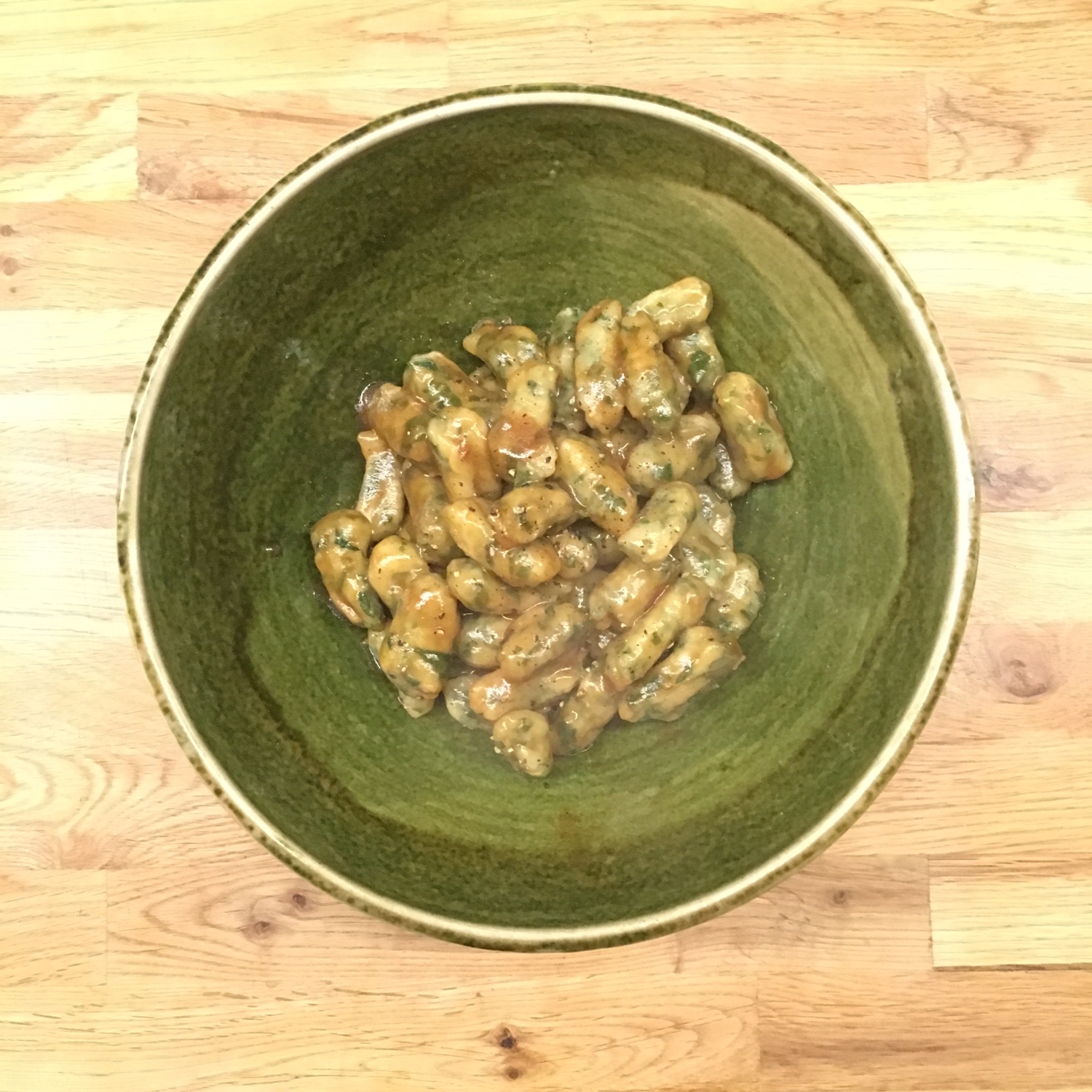
Sakura risotto
As I was writing last time, it’s just the peak season for sakura viewing. And therefore I thought of using sakura flowers in some recipes again. The classic would be sakura rice or sakura rice balls, but since my parents are staying with us and my dad was crying for a risotto, in remembrance of the first risotto: porcini risotto, I cooked when I was still in high school… So to please him a risotto I cooked, with carrots, a few shiitake and leeks for the base, some turnip tops for the green, and a sakura broth as seen below. Given how quick the plates were wiped, I guess everyone liked it!!! So here is my recipe (below the picture)
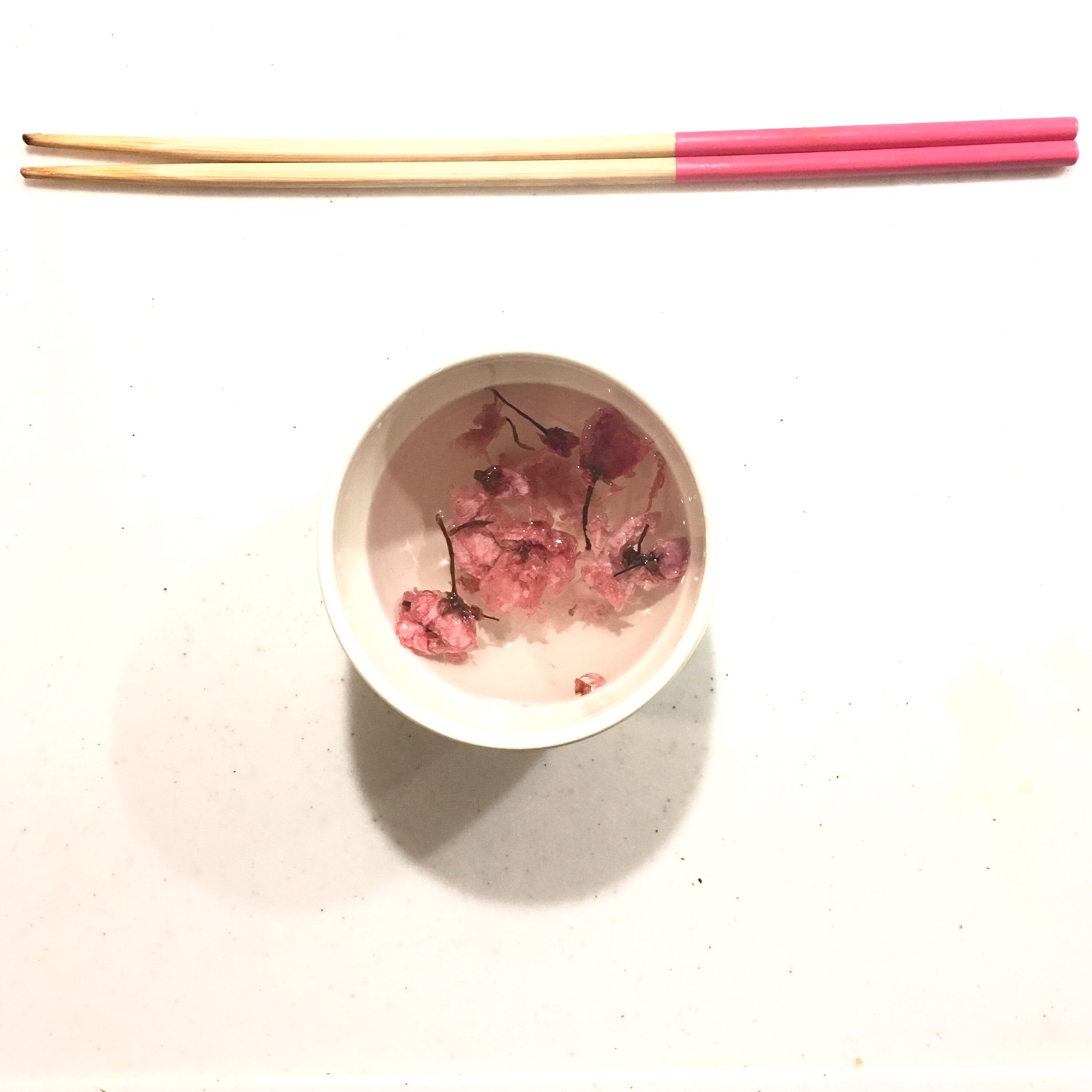
Sakura risotto (4 servings)
– 1 cup of rice, either Japanese or Italian
– 2 or 4 new carrots depending on size, mine were big so I used 2
– 2 small leeks
– 2 shiitake
– 12 sakura flowers in dry salt
– olive oil (not too fruity)
– 10 pink pepper seeds
– a bit of ground pepper
Start with the base: wash and cut the leeks and the shiitake in small pieces. In a heated pan add some olive oil and the vegetables and stir once in a while until slightly golden.
In a cup put the sakura flowers in salt and fill the cup with water to make the broth.
Wash and dice the carrots, add to the vegetables in the pan, and add the rice, roast for some time. Add the sakura broth and cook at low heat until the water is almost gone. Add then 3-4 cups of water, the pink pepper, some ground pepper, 8 of the sakura flowers. Cook at low heat. When the water is almost gone add the turnip tops cut in 2cm long pieces. Cook and stir until all the water is gone, but the whole thing is still moist. Serve immediately and use the remaining flowers to dress the plates.

